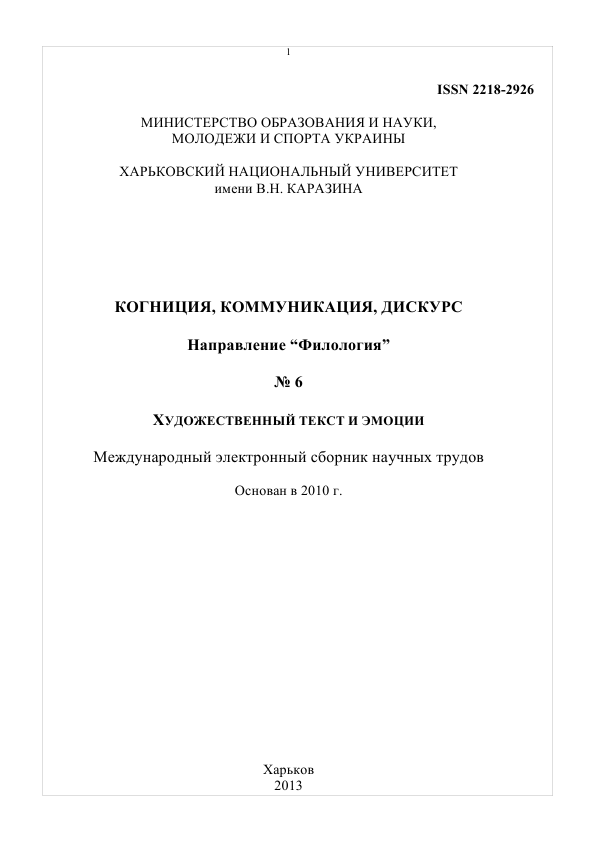Binding function of metaphor
Abstract
This paper focuses on the analysis of the theories of metaphor developed in American cognitive linguistics. The idea of metaphor as the basis for emergent structures is opposed by the view according to which metaphor, as well as other processes of semantic derivation and word formation, is preconditioned by the previously established links between objects, their properties and relations that exist in the experienced world.
Downloads
References
Никитин М.В. Курс лингвистической семантики / Никитин М.В. –СПб.: Изд-во РГПУ им. А. И. Герцена, 2007. – 819 с.
Пиаже Ж. Схемы действия и усвоение языка / Ж. Пиаже // Семиотика / сост. Ю. С. Степанов. – М.: Радуга, 1983. – С. 134–136.
Fauconnier G. The Way We Think. Conceptual Blending and the Mind’s Hidden Complexities / G. Fauconnier, M. Turner. – N.Y.: Basic Books, 2002. – 440 p.
Lakoff G. Metaphors We Live By / G. Lakoff, M. J. Johnson. – Chicago [u.a.]: Univ. of Chicago Press, 2003. – 242 p.
Authors, who publish with this journal, accept the following conditions:
The authors reserve the copyright of their work and transfer to the journal the right of the first publication of this work under the terms of the Creative Commons Attribution License (CC BY), which allows other persons to freely distribute a published work with mandatory reference to the authors of the original work and the first publication of the work in this journal.
Authors have the right to enter into separate additional agreements for the non-exclusive dissemination of the work in the form in which it was published by this journal (for example, to post the work in the electronic institutions' repository or to publish as part of a monograph), provided that the link to the first publication of the work in this journal is given.
The journal policy allows and encourages the authors to place the manuscripts on the Internet (for example, in the institutions' repositories or on personal websites), both before the presentation of this manuscript to the editorial board and during review procedure, as it contributes to the creation of productive scientific discussion and positively affects the efficiency and dynamics of citing the published work (see The Effect of Open Access).




